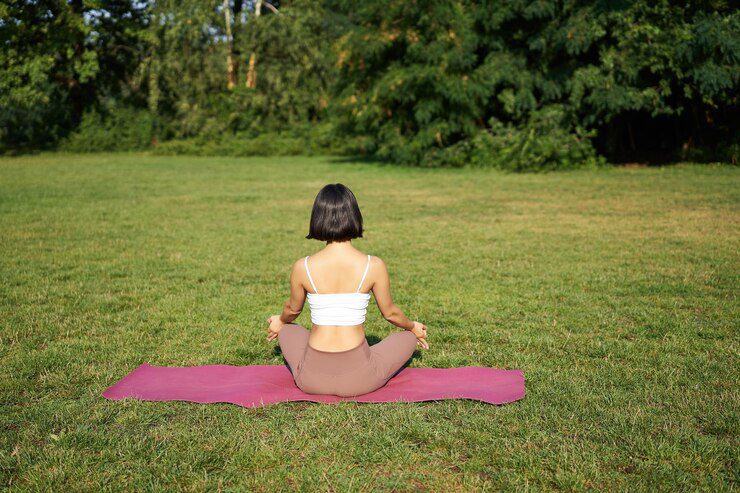In today’s fast-paced world, finding moments of tranquility and relaxation is more vital than ever for maintaining our mental and emotional well-being. When it comes to creating a space for meditation, mindfulness, and relaxation, your backyard can be an ideal sanctuary, providing an escape from the everyday stressors of life. By thoughtfully designing your outdoor meditation space, you can build a personal zen oasis that fosters mental focus, inner peace, and a deeper connection with nature.
In this guide, we will share valuable tips and ideas for designing a serene and calming backyard meditation space. From choosing the perfect location and incorporating natural elements to optimizing your space for comfort and relaxation, these insights can help you transform your backyard into a haven of mindfulness and rejuvenation. As a regional destination for shoppers seeking the best values in backyard living, we gladly offer a wide range of outdoor products and patio furniture, sure to inspire and support the creation of your ideal meditation retreat.
1. Choose the Ideal Location: Tranquility Starts with a Perfect Spot
The first step in creating a backyard meditation space is to identify the ideal location. This space should be relatively quiet and secluded and provide at least partial shade. Consider these factors when selecting the perfect spot:
- Seclusion: Opt for an area in your backyard that provides privacy and tranquility. This might be a quiet corner behind a fence or a secluded area behind large plants or trees.
- Shade: Ensure your meditation space has some degree of protection from the sun, particularly during the hottest parts of the day. Natural shade from trees or structures like pergolas can provide a cooler and more comfortable environment.
- Nature: A natural setting can significantly enhance the ambiance of your meditation space. Choose a location surrounded by plants, trees, or a garden view to enjoy the sights, sounds, and scents of nature during your meditation practice.
2. Incorporate Natural Elements: A Serene Atmosphere Through Nature’s Gifts
Incorporating natural elements can significantly enhance your backyard meditation space’s serenity and calming atmosphere. Consider adding the following elements for a soothing experience:
- Water features: The sound of flowing water can have a calming effect on the mind and create a relaxing ambiance. Explore options like bubbling fountains, waterfalls, or even a small pond with a gentle, trickling stream.
- Plants and flowers: Surround your meditation space with various plants and flowers that evoke tranquility and a sense of peace. Choose calming, non-invasive plant species and include aromatic herbs or flowers, such as lavender, chamomile, or jasmine.
- Natural textures and materials: Use elements like wooden decking, stone pathways, or pebbles to create a natural and harmonious outdoor retreat. Incorporate weather-resistant outdoor rugs made from natural fibers like jute or sisal for added texture and comfort.
3. Optimize Comfort and Functionality: Essential Meditation Accessories
A comfortable and functional backyard meditation space requires attention to small details that can make a significant impact on your relaxation experience. Here are some tips to ensure your meditation space is inviting and comfortable:
- Seating: Choose a comfortable seating option based on your personal preferences. You might use a comfortable outdoor cushion for traditional cross-legged meditation, a meditation bench, or a supportive chair. Ensure your seating choice accommodates your preferred meditation posture and supports your body.
- Shade and shelter: If your chosen location doesn’t provide adequate shade, consider adding a canopy, umbrella, or shade sail to shield you from the sun’s rays. In addition, think about incorporating some shelter from the elements, like an outdoor gazebo or pergola, for year-round use.
- Meditation tools: To further enhance your outdoor meditation experience, consider using incense, essential oils, or a Bluetooth speaker for soothing music and guided meditations. Keep a dedicated storage space for these meditation tools so everything is within easy reach.
4. Personalize Your Space: Creating a Unique and Inspiring Sanctuary
Your backyard meditation space should reflect your personality and unique preferences. Add decorative elements and personal touches that inspire tranquility and a deep sense of reflection:
- Statues and art: Incorporate tasteful and serene statues, such as Buddha sculptures or Zen-inspired artwork. Choose pieces that resonate with your personal taste and create a focal point for visualization or contemplation during meditation.
- Color palette: Select a calming color palette for your meditation space, focusing on muted, earthy tones or soft pastels. Choose cushions, textiles, and accessories that align with this palette to create a visually cohesive and soothing environment.
- Spiritual symbols: Depending on your spiritual beliefs and meditation practices, you may wish to incorporate items or symbols that invoke a sense of spiritual connection. Consider adding a small altar, prayer flags, or meaningful decorations that resonate with your inner journey.
Conclusion
Designing your perfect backyard meditation space requires thoughtful planning and consideration, but the result is a serene and calming oasis for relaxation and mindfulness. With a carefully chosen location, incorporating natural elements, comfortable functional accessories, and personalized touches, you can create the ideal environment for meditation practice and reap the many benefits of mental and emotional well-being.
Are you inspired to create the perfect backyard meditation space? Visit Cincinnati Pool & Patio, where our dedicated and experienced team is always ready to help you explore our vast array of outdoor products and design elements. Together, we can make your vision of a tranquil backyard sanctuary a reality.



